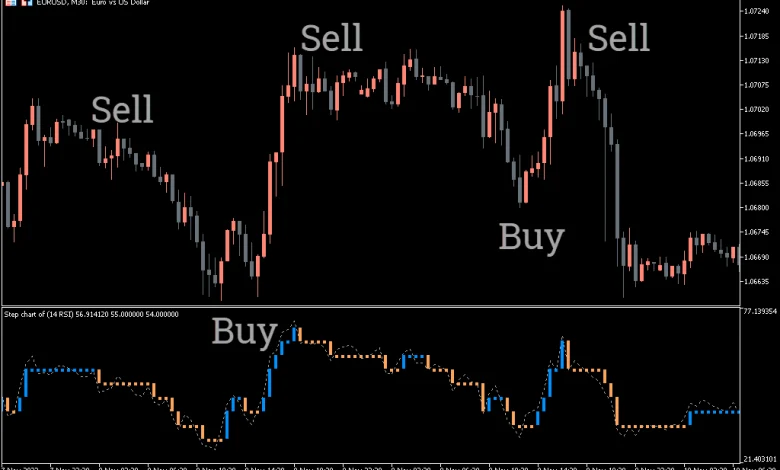How to Use RSI for Prop Firm Trading in MT5

You’re not playing around with demo dollars anymore as you’re working with real capital that belongs to someone else and there are rules you’ve got to stick to. That means every trade you take needs to be backed by solid reasoning and a tight strategy. One of the tools a lot of successful prop traders lean on is the Relative Strength Index or RSI.
If you’re using MT5 as your platform which most prop firms these days support then you’re lucky because RSI is built right in. But just tossing it on a chart and hoping for the best isn’t gonna cut it. You need to understand what RSI actually tells you, how to interpret it in different market conditions, and how to fold it into a strategy that’s sharp enough to pass those prop firm challenges and grow your funded account.
So, if you’re ready to use RSI like a pro then let’s discuss it in detail.
What Is RSI?
RSI stands for Relative Strength Index and it’s a momentum oscillator. Don’t let the term oscillator scare you off—it just means the indicator bounces between two extremes, in this case, 0 and 100. What RSI does is measure the speed and change of recent price movements.
The classic interpretation? If RSI goes above 70 then the asset is considered overbought. If it drops below 30 then it’s seen as oversold.
This is crucial just because something is overbought doesn’t mean it’s about to fall. And just because it’s oversold doesn’t mean it’s ready to bounce. That’s where a lot of new traders get tripped up.
In prop trading, that kind of misunderstanding can blow your challenge real quick.
Why RSI Works Well for Prop Firm Trading
Why should prop traders care about RSI? Simple: it’s reliable, versatile, and can give you an edge in the high-pressure world of funded accounts.
Here’s the thing that prop firms usually give you a tight risk window to operate in. You’ve got to manage your drawdown like a hawk and you can’t afford to enter on a whim. RSI helps you get confirmation. It’s not a magic entry button, but it’s a tool that can tell you when the market might be stretched too far, too fast.
Used properly, RSI can:
-
Help you spot potential reversals especially when combined with price action
-
Confirm momentum in trend-following strategies
-
Act as a filter so you don’t take trades that look good but don’t have juice behind them
-
Keep you from entering overbought markets at the top or oversold ones at the bottom
The key is to use it in context and we’ll get into that.
Setting Up RSI in MT5
If you’ve never used RSI in MT5 trading platform before, don’t sweat it—it takes like 10 seconds.
Here’s how you do it:
-
Open your MT5 platform.
-
Go to the Insert tab at the top.
-
Choose Indicators > Oscillators > Relative Strength Index.
-
A window will pop up—keep the default period at 14 (you can experiment later).
-
Hit OK.
You’ll see the RSI show up in a separate window below your price chart.
You can tweak the levels too. Most traders stick with the standard 30/70 levels but if you want tighter signals, you might try 40/60 or even 20/80. Just make sure you’re consistent and test your changes.
RSI Strategies That Actually Work in Prop Firm Environments
How to actually trade with RSI inside a prop firm setting.
We’re gonna talk about three main approaches:
RSI Reversal Strategy (The Classic One)
This is the old-school method a lot of people learn first. You’re basically looking to buy when RSI drops below 30 (oversold) and sell when it rises above 70 (overbought).
But here’s the catch: don’t just blindly trade based on those numbers.
Instead:
-
Look for RSI to cross back up over 30 to buy, or cross below 70 to sell.
-
Pair it with price action—support/resistance levels, candlestick patterns, etc.
-
Avoid trading this in strong trending markets (you’ll just get steamrolled).
Example: Let’s say GBP/USD is in a range and RSI dips to 25. Price bounces off a key support level and RSI climbs back over 30. That’s your buy signal. Add a tight stop below support and target the top of the range.
This strategy works well during sideways markets so make sure you’re not fighting a strong trend.
RSI Trend Confirmation
If you’re more of a trend trader (which a lot of prop traders are, for consistency), RSI can help confirm your bias.
Here’s how:
-
In an uptrend, RSI tends to stay above 40 and often bounces around the 50-70 zone.
-
In a downtrend, it hangs below 60, often ranging between 30-50.
So, instead of using RSI to spot reversals, you’re using it to confirm trend strength. If price pulls back and RSI stays above 40, the uptrend’s still healthy—you might look for an entry on the next push.
This works beautifully with moving average crossovers, structure breaks, and pullback entries.
Example: You’re trading NAS100 and it’s been trending hard. You see a retracement to a key moving average, RSI stays above 50, and price forms a bullish engulfing. You enter with confidence, knowing RSI supports the move



